
5 things to know about Winnipeg’s big sewage problem
115 billion litres, 70 years to fix, $5.5 billion in lawsuits
Get the inside scoop on The Narwhal’s environment and climate reporting by signing up for our free newsletter.
In the early 2010s, John Rustad, current leader of the BC Conservatives, was Minister of Aboriginal Relations. Tasked with getting First Nations to agree to a massive expansion of the province’s natural gas sector, Rustad set out to negotiate agreements with Indigenous leaders across the north — agreements that are now lighting the fires of conflict under B.C.’s newest pipeline project, the Prince Rupert Gas Transmission (PRGT) line.
The 800-kilometre pipeline would ship natural gas from the northeast to a proposed floating liquefaction and export facility on the northwest coast. Its agreements and approvals happened around the same time as those for the controversial Coastal GasLink pipeline and until recently, both projects were owned by the same company, multinational pipeline giant TC Energy. For years, there has been conflict between Wet’suwet’en land defenders and Coastal GasLink: the B.C. government and TC Energy signed deals with five of six elected Wet’suwet’en band councils but did not receive free, prior and informed consent from Wet’suwet’en Hereditary Chiefs, who opposed the pipeline.
The PRGT project is a bit different, because agreements were signed with a mix of elected band councils and some — though not all — hereditary chiefs across the north. But it’s been 10 years since the ink dried and some Indigenous leaders believe the pipeline should be subject to a new environmental assessment — or scrapped entirely.
Making things more complicated, TC Energy sold the Prince Rupert Gas Transmission line to the Nisga’a government and its industry partners earlier this year. The Nisga’a government says the pipeline — along with the proposed Ksi Lisims liquefied natural gas (LNG) project it co-owns that the pipeline will supply — will help build economic prosperity.
In late August, as clearing work for pipeline construction began on Nisga’a territory, Gitanyow Hereditary Chiefs burned agreements and set up a blockade to stop traffic related to the project from crossing their territory. A few days later, Indigenous and non-Indigenous groups launched legal action against the project, alleging the BC Energy Regulator broke its own rules to green light construction. Opposition to the pipeline is growing and Indigenous leaders, who continue to maintain the blockade, have said they plan to take whatever action is necessary to stop the project.
“I will die here if I have to,” Watakhayetsxw Deborah Good, a Gitanyow Hereditary Chief from the Ganeda (Raven/Frog) Clan, said at the blockade.
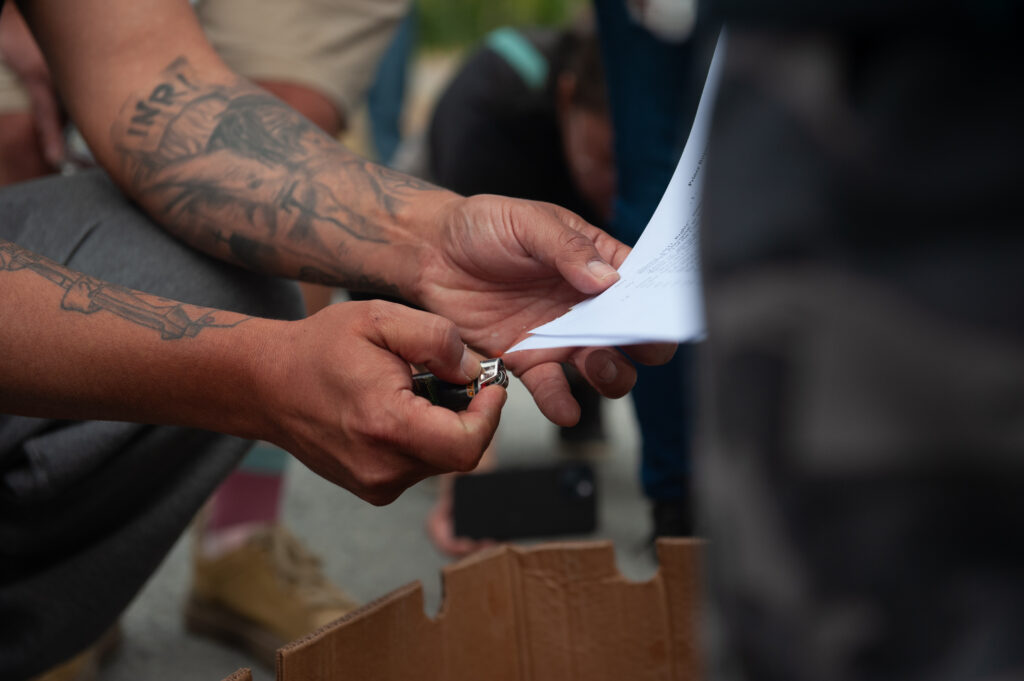
As a key decision about the Prince Rupert Gas Transmission line looms, the party that forms government following the Oct. 19 B.C. election will face a quagmire of conflict and tough decisions about how to navigate the unfolding situation.
“I think everyone has the Coastal GasLink scenario in mind in the context of what is developing around PRGT,” Gavin Smith, lawyer with West Coast Environmental Law, told The Narwhal. He said if the project proceeds, he anticipates “very pronounced opposition.”
The new provincial government will consider work done on the pipeline until Nov. 25 in its decision about whether to lock in the project’s original approval indefinitely by granting what’s called a “substantially started” designation, or if it will require a new environmental assessment. The pipeline received government approval in 2014 for a route that ended in Prince Rupert. But the route was changed in an amendment application filed with the B.C. Environmental Assessment Office in June.
Now the Prince Rupert gas pipeline isn’t going to Prince Rupert. Instead, the proposed final destination is the as-yet-unapproved Ksi Lisims LNG project on B.C.’s north coast, near Alaska. Smith said the destination change calls into question whether the pipeline is the same project that was approved.
“Now we’re seeing, effectively, a different project being proposed that is going to an entirely different place,” Smith said. He said pipeline construction started this summer based on what appears to be an attempt to “portray and advance this through existing permits that were made for a project that was going to Prince Rupert.”
“If the provincial government were to approve and advance, or enable the advancement of, the PRGT project in those pretty suspect legal circumstances, in my view, I think that is going to deeply aggravate and increase the likelihood of the types of conflicts on the land that everyone wants to see avoided,” he said.
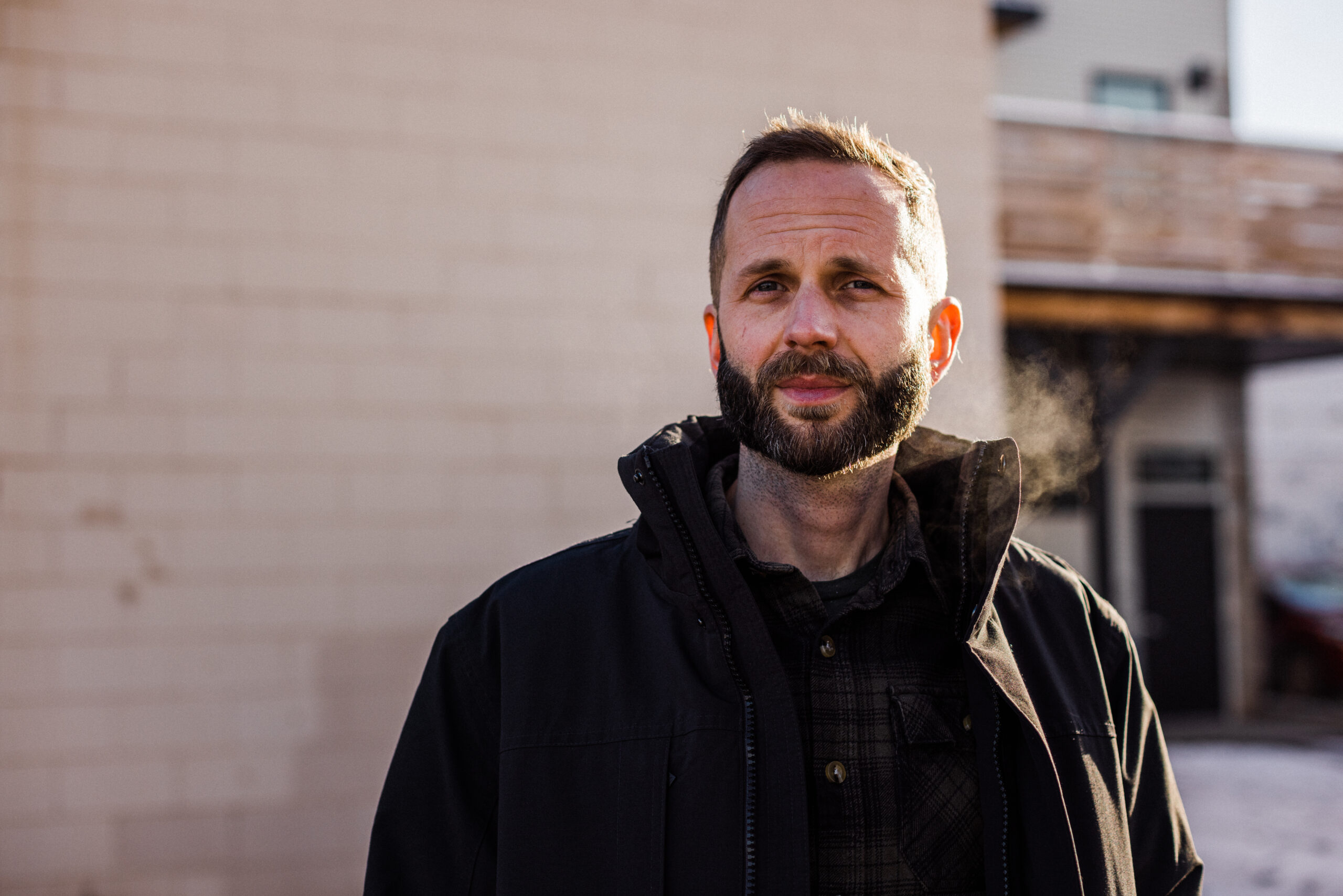
The decision about whether to proceed with a new environmental assessment will be made by whomever becomes B.C.’s new environment minister following the election. It’s a two-party race to form government between the Conservatives and NDP, both of which support expanding the LNG sector. But, if neither party wins enough seats to form a majority government, the balance of power could be held by independent MLAs or the BC Green Party: while their party is trailing in the polls, Green MLAs are against expanding fossil fuel infrastructure and have said they would let the PRGT pipeline’s environmental assessment certificate expire.
Rustad is vying for the premier’s office on a platform promising to accelerate development of fossil fuel infrastructure in the province. The BC Conservatives have promised to “dramatically expand B.C.’s natural gas production and [liquefied natural gas, or LNG] export facilities,” touting the oft-repeated narrative that natural gas will displace more carbon intensive coal-fired electricity in countries across the Pacific Ocean.
That narrative is widely disputed by critics, who point to how countries like China, frequently cited for its reliance on coal for energy production, are outpacing most in developing renewable energy projects. The benefits of LNG are also disputed in a new peer-reviewed study, which shows how exported gas has a larger carbon footprint than coal.
While the BC NDP doesn’t use the same language as the BC Conservatives, it offers much the same narrative. In an interview with Bloomberg this summer, BC NDP Leader David Eby said he thinks it’s possible to double initial production at the country’s first LNG export project, LNG Canada, while still meeting the province’s climate goals.
LNG Canada is slated to commence export operations next year in Kitimat, B.C.
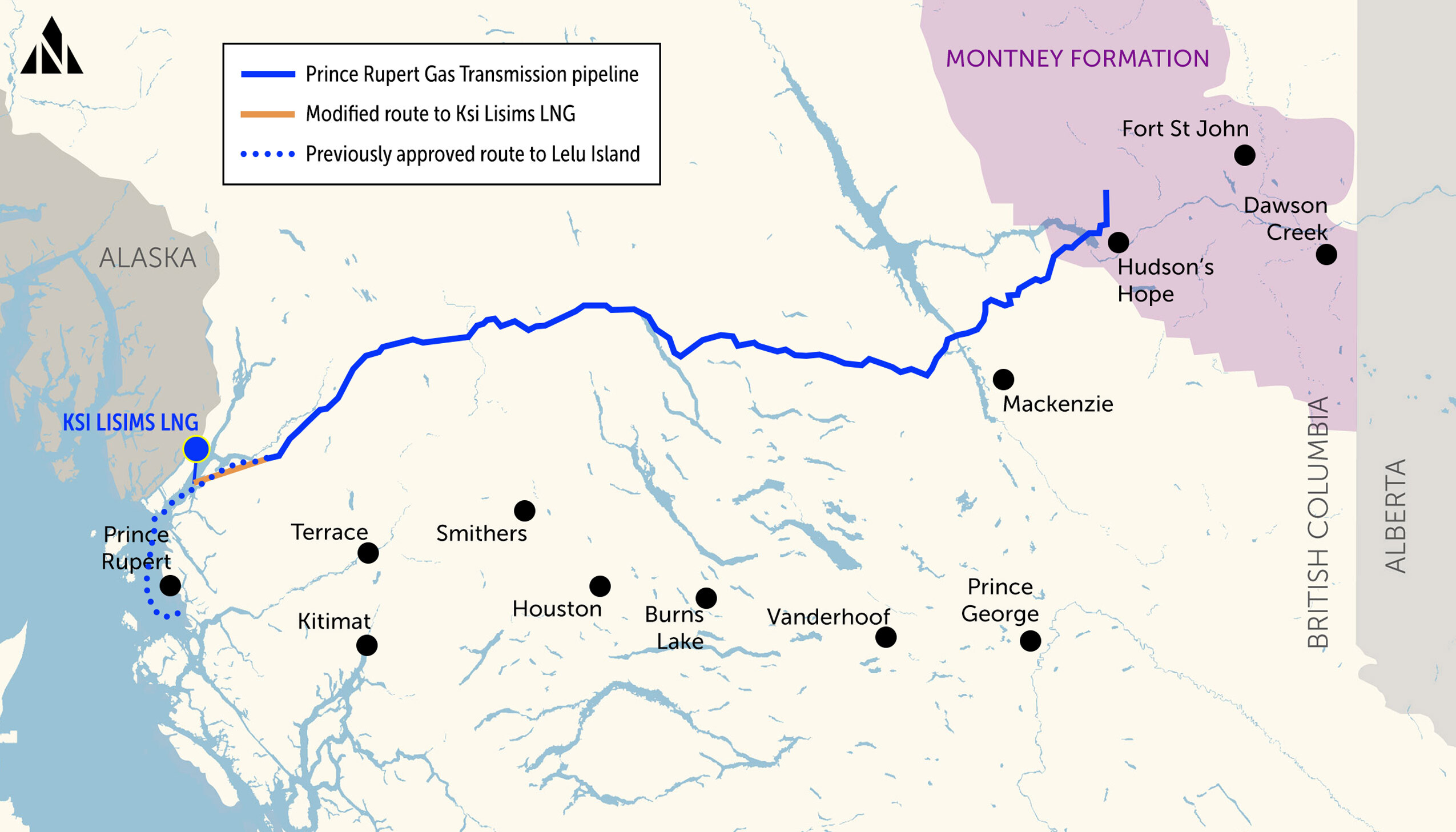
Rustad negotiated the Coastal GasLink and Prince Rupert Gas Transmission agreements when Christy Clark was B.C.’s Liberal premier. Clark was known for holding press conferences at industrial sites, posing with a hard hat as she championed creation of a liquefied natural gas export sector in B.C.
“We have a transformative opportunity for our province with natural gas and we are moving forward without delay with a strong plan,” she said in her 2013 throne speech, promising the sector would “generate $1 trillion in economic activity over the next 30 years.”
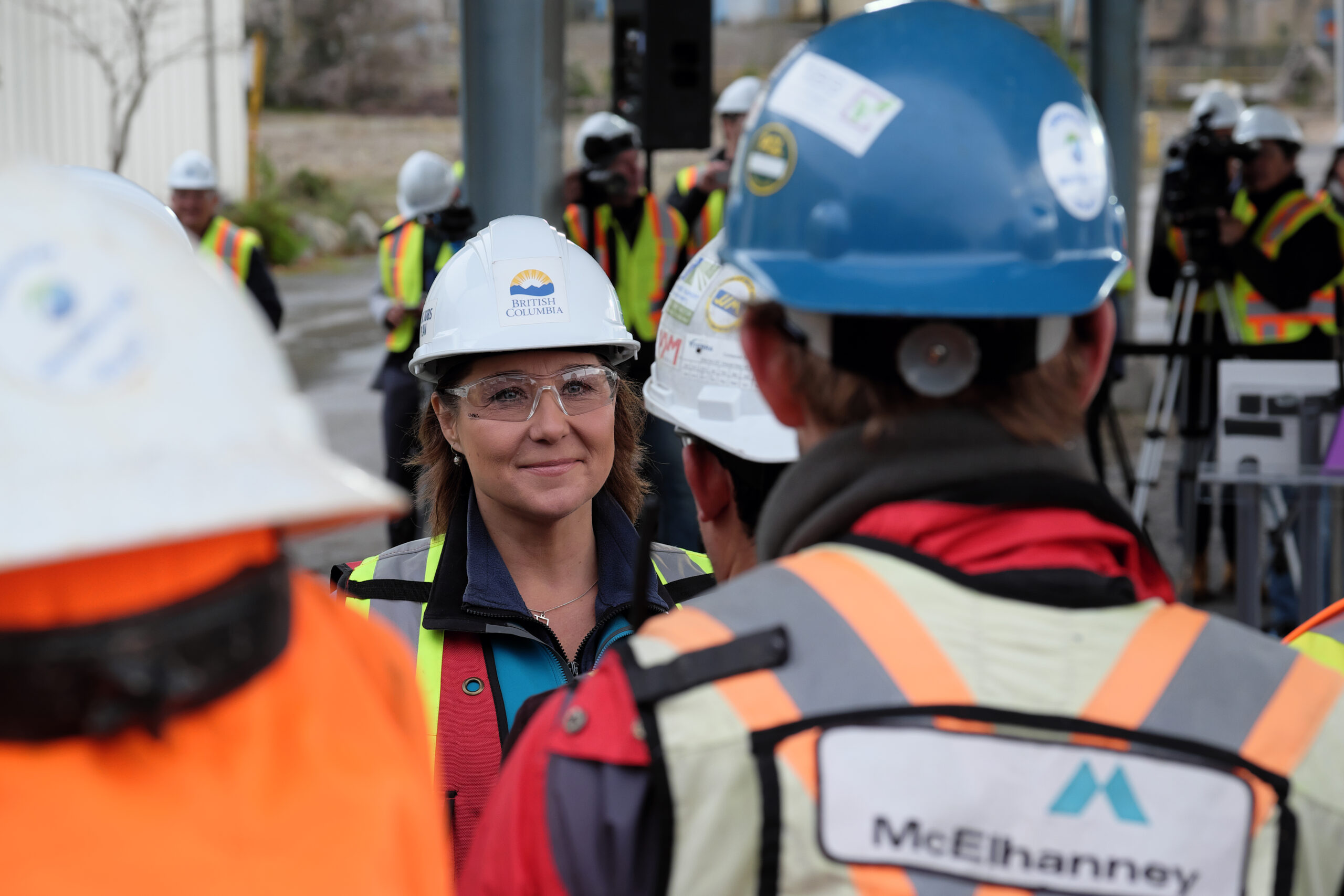
At the time the pipeline agreements were presented to First Nations, communities across the north were resisting Enbridge’s Northern Gateway pipeline project, which would have shipped oil byproducts along a 1,200-kilometre corridor between northern Alberta and Kitimat, B.C. The prospect of natural gas was largely presented as the safer of the two options and an economic boon for Indigenous and non-Indigenous communities alike.
Despite Clark’s lofty LNG dreams, the industry didn’t materialize during her tenure.
Only after the BC NDP came to power in 2017 did the LNG export sector become a reality. With John Horgan at the helm, the province negotiated additional agreements with several First Nations, solidifying B.C.’s plans. In 2018, Horgan joined Prime Minister Justin Trudeau, First Nations leaders and executives of some of the world’s biggest fossil fuel companies to announce LNG Canada and the Coastal GasLink pipeline were going to be built.
“I can’t tell you how proud I am. I can’t stop smiling,” Horgan said at a news conference at the time.
Under Eby’s leadership, the government also approved Cedar LNG — a Haisla Nation-led liquefaction and export facility that will receive gas from Coastal GasLink. Additionally, it issued construction permits for Woodfibre LNG, a liquefaction project under construction in Squamish, B.C., that is majority owned by Indonesian billionaire Sukanto Tanoto’s Pacific Energy Company.
The province’s environmental assessment office is also reviewing the proposed Ksi Lisims project, which would be B.C.’s second-largest LNG export facility.
As construction on the LNG Canada and Coastal GasLink projects got underway, B.C. quickly became a focal point for conflict between industrial development and Indigenous Rights.
In early 2020, the world watched as Wet’suwet’en opposition to Coastal GasLink led to Indigenous-led solidarity protests that shut down railways and ports across the country. It was a flashpoint that signalled growing frustration with carbon-intensive resource extraction proceeding without consent from Indigenous leaders, held in stark contrast against political commitments to reconciliation and reducing greenhouse gas emissions.
As Coastal GasLink construction continued during COVID-19 lockdowns, Wet’suwet’en land defenders and their allies were repeatedly arrested and subjected to alleged police violence and racism during RCMP raids on remote resource roads. Some neighbouring nations that stood in solidarity with Wet’suwet’en during blockades and demonstrations are now in the path of the Prince Rupert Gas Transmission pipeline.
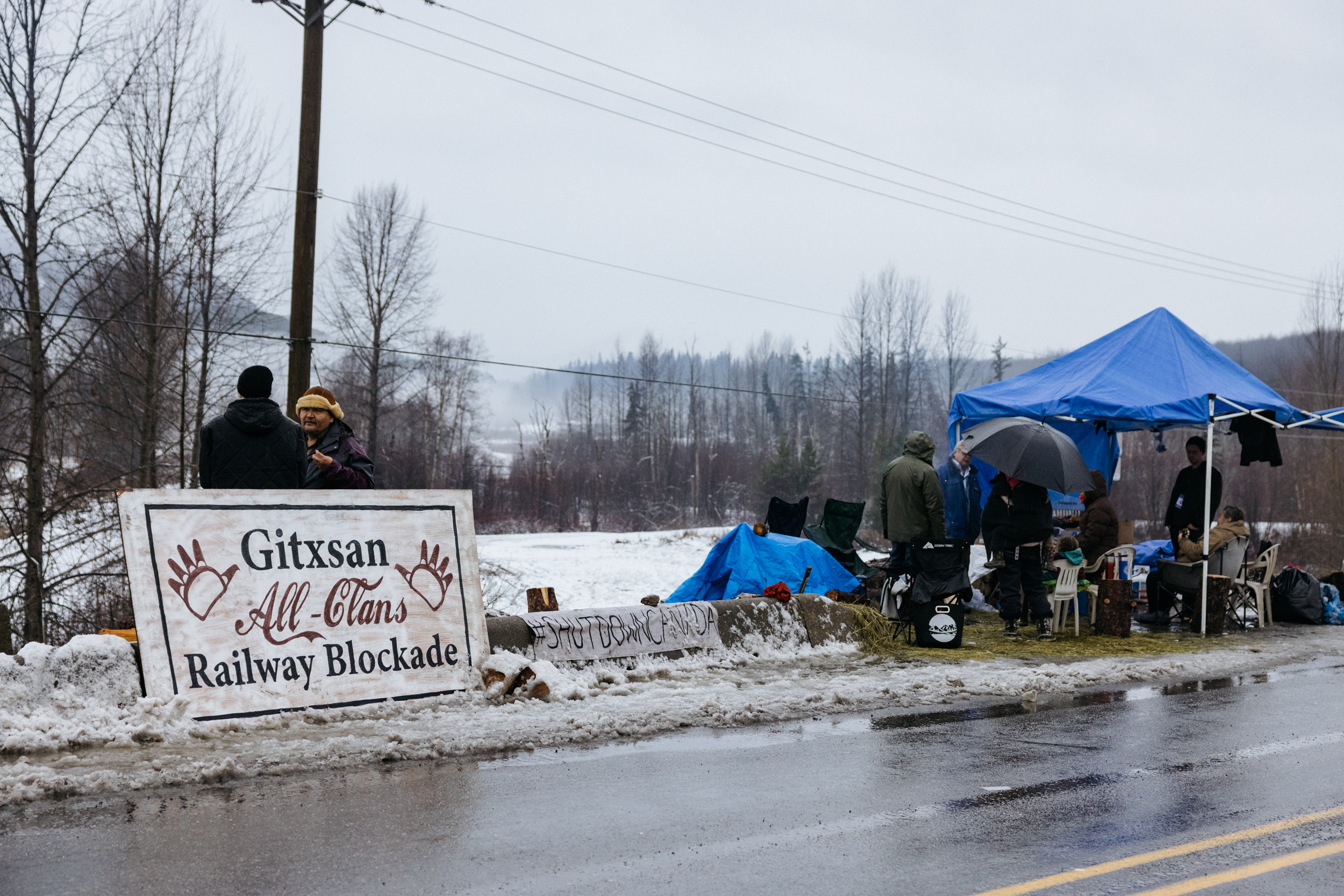
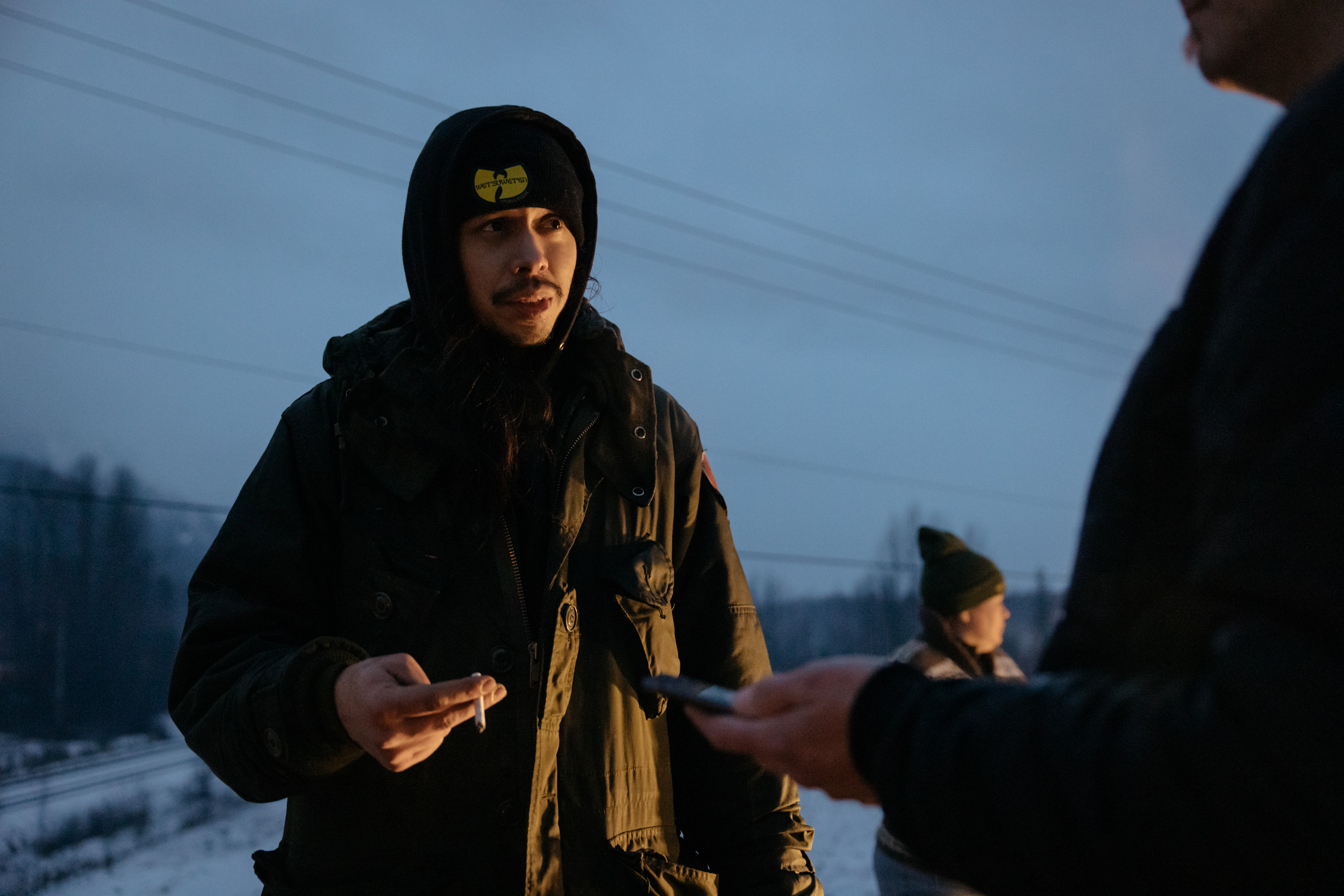
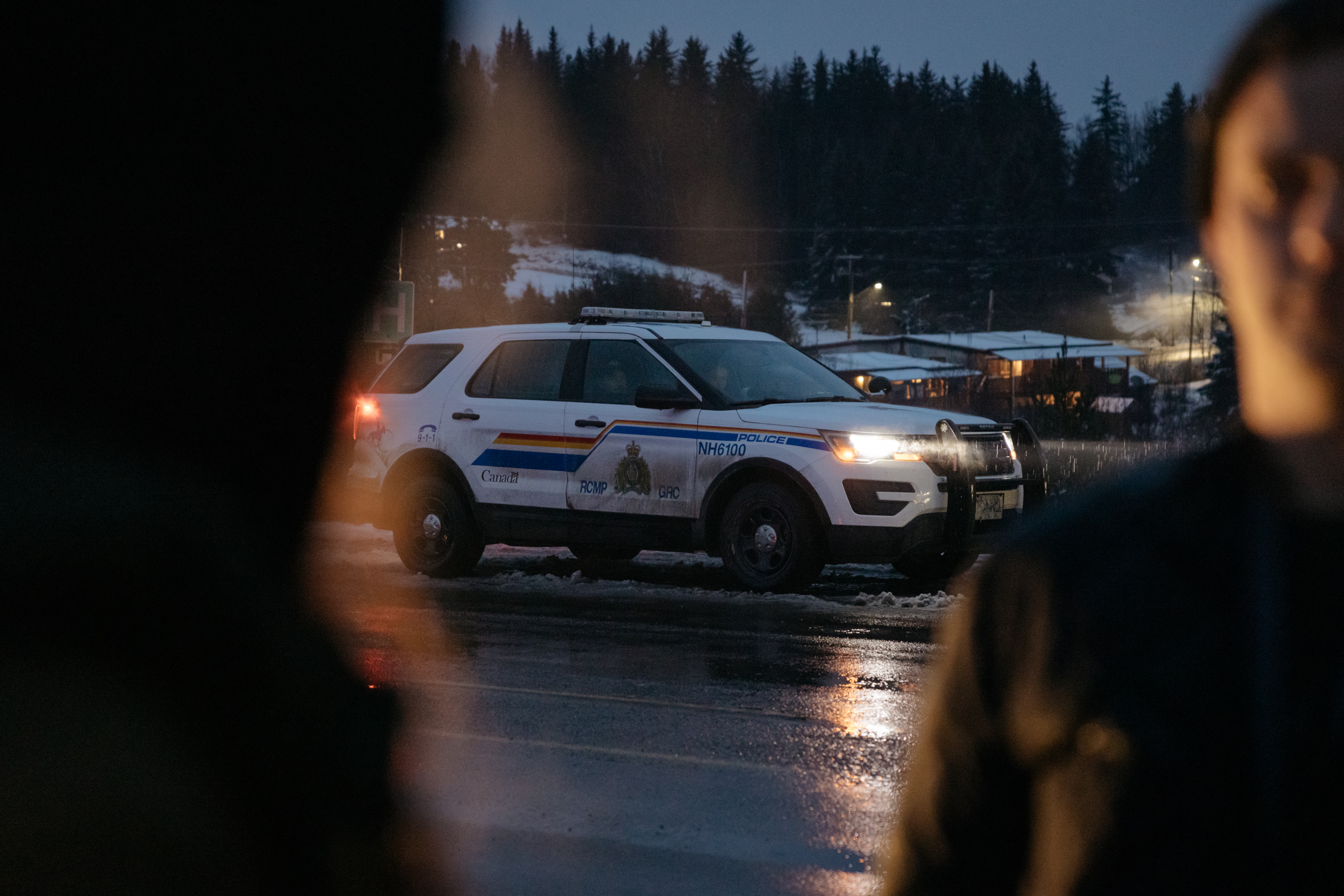
David Tindall, a professor in the University of British Columbia’s sociology department, said the fact the new pipeline is now co-owned by the Nisga’a government will influence the B.C. government’s response to potential conflict, whichever party wins the election.
He said he’s seen a trend where the NDP “is partly trying to do certain types of extractive development,” typically subject to opposition from environmental activists, “by facilitating these kinds of projects when they’re owned or run by First Nations communities.”
“If it’s a First Nations pipeline, I would imagine the NDP government being more sympathetic to it,” he told The Narwhal.
The response would look similar if the BC Conservatives form government, he added.
“If the Conservatives win the election, I would see them being a little bit more inclined to pick winners and losers and back the pipeline owners and basically oppose any groups that are opposed to the pipeline.”
Earlier this year, the BC Conservatives pledged to hold “activists who impede the activity of resource development through illegal blockades” accountable — a promise which was later quietly scrubbed from the party’s website.
Neither the Nisga’a Lisims Government nor Western LNG responded to The Narwhal’s requests for comment before publication.
TC Energy’s sale of the Prince Rupert Gas Transmission pipeline to the Nisga’a government complicates the pipeline issue and conflict, pitting nation against nation.
But that’s a distraction from the real issue, according to Naxginkw Tara Marsden, a Gitanyow member from Wilp Gamlakyeltxw who works with the Gitanyow Hereditary Chiefs.
“We’re stuck in this cycle of people only paying attention when it’s that really heated, race-based conflict and the fact that this is nation to nation is even juicier,” she told The Narwhal. “But that’s not the story — the story is the climate is going to kill us all.”
Natural gas is mostly composed of methane, a powerful greenhouse gas 80 times more powerful than carbon dioxide for its short-term warming impact on the planet. Methane is invisible and odorless, which means leaks are notoriously hard to detect. And every step of the process — including the wellhead, pipeline, liquefaction, shipping, regasification and combustion — adds more greenhouse gases to the atmosphere, intensifying the effects of climate change.
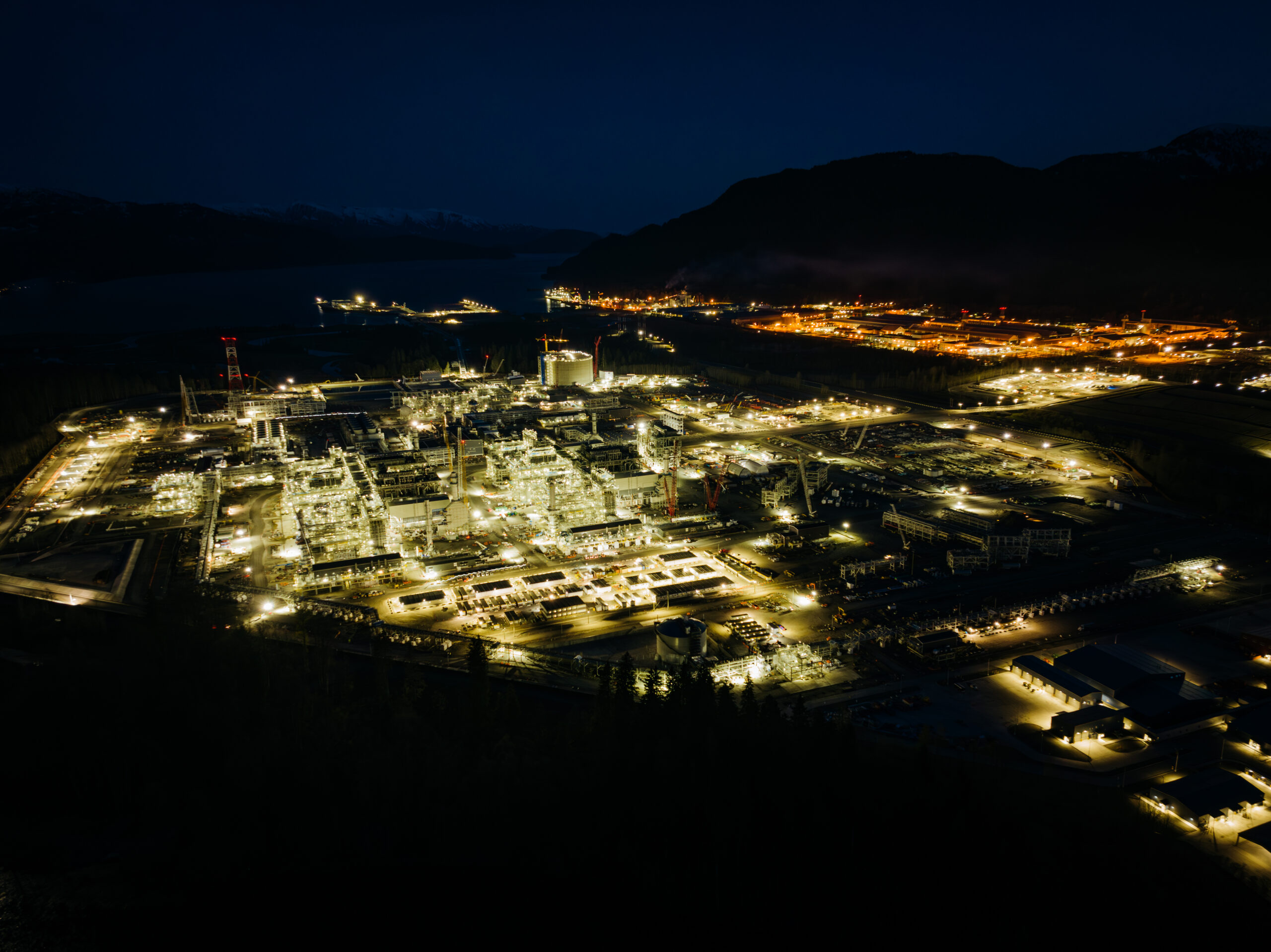
A recent study in the journal Energy Science and Engineering calculated the climatic impacts of the full lifecycle of getting gas out of the ground and shipped overseas to be burned for energy production. The study, authored by Robert Howarth, a Cornell University environmental scientist, concluded natural gas exported from the United States produces 33 per cent more greenhouse gases than coal.
“To think we should be shipping around this gas as a climate solution is just plain wrong,” Howarth told The Guardian.
As the last few years have shown, erratic weather systems, prolonged droughts, floods, atmospheric rivers and devastating wildfires are affecting communities across Canada and around the world. The insurance industry is pulling back from insuring vulnerable properties, health care systems are struggling and everything from housing affordability to food security are experiencing increasing stressors as a result of direct or indirect climate impacts.
Naxginkw said she and the chiefs have been arguing for a decade that the risks of more fossil fuel extraction far overshadow any potential benefits.
“People just don’t see what’s coming, which is really the sad part — people don’t see things that are at our doorstep and are going to blindside us.”
Though she believes it’s unlikely much will change after the election, she’s not going to stop challenging the systems enabling further fossil fuel development.
“When we are challenging these totally corrupt systems and processes, people want to throw it back in our face with, ‘Well, what’s your solution?’” she said. “It’s just a way to divert attention and to put this onus on people who are challenging the system to also create solutions at the same time.”
“If we just were able to hold people accountable and to be transparent and to say these things are wrong — and yes, corporations, you can still exist but you can’t do this shit anymore — that, in and of itself, is a huge gift to everybody and will create a better playing field in which solutions can emerge.”
Updated on Oct. 10, 2024, at 9:20 a.m. PT: This story was updated to clarify that the new provincial government will consider work done on the pipeline until Nov. 25 in its decision about whether to lock in the project’s original approval indefinitely by granting what’s called a “substantially started” designation.
Get the inside scoop on The Narwhal’s environment and climate reporting by signing up for our free newsletter. On a warm September evening nearly 15...
Continue reading
115 billion litres, 70 years to fix, $5.5 billion in lawsuits

Climate change, geopolitics and business opportunities power a blue economy

10 billion litres of sewage are dumped into Winnipeg’s lakes and rivers each year. Some...
